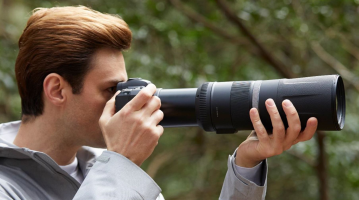Looks like with the RF mount we only have a choice between unreasonably underspecced and insanely expensive.
...because doing the sweet spot in the middle where we all probably live today won't be very successful financially. Consider: just rebuilding EF portfolio of lenses in RF will not:
- Bring all the EF faithful over to RF (they'll just adapt EF)
- Bring new users to the RF platform
- Allow Canon to build new price points
- Make much hay over what Sony and Nikon are doing
- Some crazy fast / industry first stuff
- Some crazy tiny lenses for the 'mirrorless is all about being small' crowd
- The odd staple f/2.8 zooms to bring in the pros
- Clever innovations to show that the company isn't resting on its laurels (adaptors with control rings / filter slots, collapsible superteles, 1:2 macro as a standard feature in affordable primes, etc.)
- A
Upvote
0

